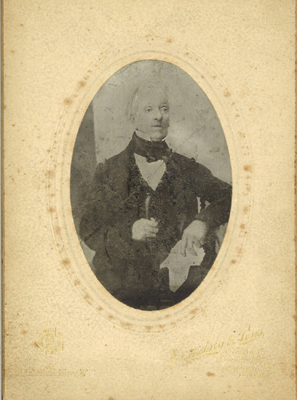People

A close shave with history
In People
Bookmark
Record learning outcomes
In the 1950s, the company began developing a new generation of razor blades using stainless steel
Steve Ainsworth traces the history of the iconic shaving brand Wilkinson Sword
Why do pharmacies sell razors? After all, they are neither chemicals nor drugs. The answer, of course, goes back to those long-ago days when apothecaries and barber surgeons were not always quite sure where the boundaries of their respective professions lay.
Had things worked out differently, then today’s bristly-chinned men and worried women might be buying their razors from their GP surgeries instead of from their local pharmacy.
Happily for our high street chemists, history worked to the benefit of them and not doctors. And one of the most popular brands of razor contributing to their sales figures is Wilkinson Sword.
The firm was founded in London in 1772 by Henry Nock (1741–1804), who was an inventor and engineer best known as a gunsmith. He produced many innovative weapons, including the screwless lock design for rifles and a seven-barrelled volley gun. He became a major supplier to the military during the Napoleonic wars, while his top-of-the-range duelling pistols and double-barrelled shotguns were much sought after by those who could afford such luxuries.
As for blades, in 1777 the Board of Ordnance paid Nock £200 to provide bayonets: no small amount for the time.
Bequest
When Nock died, his business, then based at Ludgate Hill, was bequeathed to his foreman and son-in-law James Wilkinson.
In 1844, Wilkinson was joined by John Latham, an accomplished swordsmith who brought a much appreciated practical perspective to the sword-making arm of the business.
When Wilkinson retired in 1858, John Latham took over the firm of ‘Wilkinson’s Gun, Rifle and Sword Maker’.

Wilkinson’s blade production remained relatively modest until a public scandal of the 1880s erupted due to the high bending and breakage rates of the British Army’s bayonets during the war in the Sudan in 1885. The poorly-made blades were blamed for a large number of deaths. To replace the blades, the Ordnance Board turned to Wilkinson’s, contracting for an order of 150,000. To meet the huge contract, the company opened a second production plant, in Chelsea.
In 1889, the company formally incorporated, becoming Wilkinson Sword Ltd. Soon after, it began diversifying. In 1890, Wilkinson Sword started to produce cut-throat razors. The company also began to develop other cutting edges, particularly one of the first safety razor designs. By 1896, the company had hit upon a new design, featuring a hollow, rounded, single-edged blade. That razor, known as the ‘Pall Mall’, was launched in 1898.
Diversification
During the First World War, the company was contracted to provide British forces with two million bayonets. Following the war, the company turned its production of cutting edges to a new area, that of pruning sheers and other gardening equipment. And, in the decades leading to the second world war, bicycles, typewriters, motorcycles, and even cars.
By the outbreak of World War II, the bayonet had become outmoded, and Wilkinson Sword’s orders for that conflict amounted to just 10,000 blades. Yet Wilkinson Sword remained a highly-respected name in sword-making. The company crafted, amongst many others, the ceremonial sword presented to Josef Stalin by Winston Churchill after Russia’s defeat of the German army at Stalingrad in 1943.
In the 1950s, the company began developing a new generation of razor blades using stainless steel. For this product, the company formed a joint venture with Germany’s Osberghaus KG. By 1955, full-scale manufacturing of the world’s first disposable stainless steel razor blade was underway.
Wilkinson Sword, which until then had largely limited itself to the United Kingdom, began to attract attention from the international market with the launch of a revolutionary new Wilkinson Sword razor blade in 1961. This blade featured a thin Teflon coating that vastly improved its comfort and efficacy.
The company’s new blades made rapid gains in shares of the market, because each of the blades, though somewhat more expensive than rivals, could be used for a whole week. Earlier carbon steel razor blades rusted so quickly that many people used a new one every day. Paradoxically, as a result, although Wilkinson gained a larger percentage share of the market, the demand for razor blades actually fell by 14 per cent.
Exports
By the mid-1960s, Wilkinson Sword blades were being sold in more than 50 countries, and exports were more than 40 per cent of sales. So successful was Wilkinson that, within a few years, it was bidding to take over its main rival Gillette. Instead, however, Wilkinson was itself sold to British Match in 1973 for £19.4m. From then on, serial changes of ownership would be the order of the day – not least, at one stage, part-ownership by Gillette.
Today, the company is owned by Energizer Holdings. In 2000, it closed its razor plant in the UK and consolidated production in Germany.
As for swords, the company’s Acton sword factory closed, and sword production ceased in 2005. The oldest sword factory in the world, WKC of Solingen, Germany, bought most of the Wilkinson Sword machinery, tools and equipment. Amongst the items sold to Germany were current British MOD pattern sword and scabbard tools as well as James Wilkinson’s original blade roll forge.
